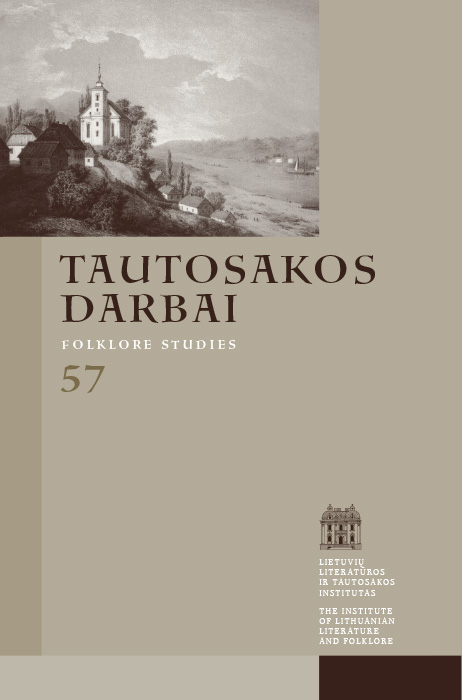Ievos Simonaitytės romano „Vilius Karalius“ etnografiškumas XIX–XX a. pirmosios pusės lietuvininkų vestuvinių papročių ir apeigų kontekste
Santrauka
Straipsniu siekiama naujai pažvelgti į Ievos Simonaitytės romaną „Vilius Karalius“ ir įvertinti jį kaip etnografinį šaltinį, teikiantį medžiagos apie XIX a. ir XX a. pirmosios pusės lietuvininkų vedybas. Tyrime literatūrinis tekstas gretinamas su istoriniais, etnografiniais faktais, skiriama dėmesio tarminei leksikai. Kaip papildoma medžiaga pasitelkiamos autentiškos istorinės nuotraukos. Išsamiau gilinamasi į tuos lietuvininkų vestuvių segmentus, kurie plačiau ar glausčiau vaizduojami Simonaitytės romane (piršlybos, nuotakos kraitis, išvažiavimas į jungtuves, dovanos, gaubtuvės ir kt.). Nustatyta, kad nors „Viliuje Karaliuje“ lietuvininkų vedybų visuma neaprašyta, tačiau palyginti gausūs vestuvinių apeigų ir papročių fragmentai, kitos etnografinės detalės reikšmingai papildo žinias apie lietuvininkų vedybas XIX–XX a. pirmojoje pusėje, atskleidžia tradicijos kaitą. Rašant straipsnį etnologiniu pagrindu buvo pasirinkti išsamiausiai ir gausiausiai lietuvių vestuvių papročius tyrusios etnologės Angelės Vyšniauskaitės darbai.
